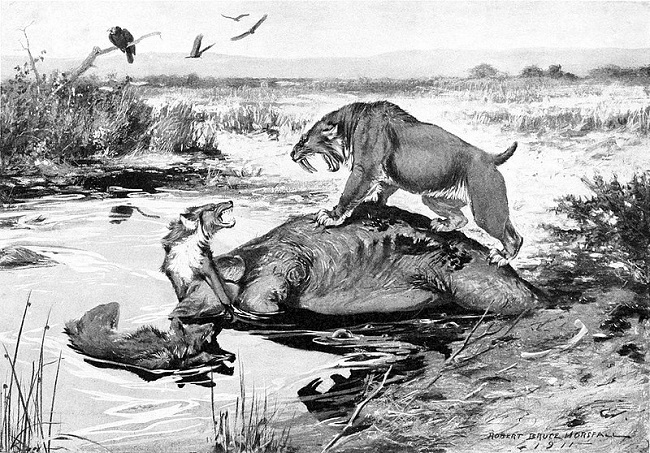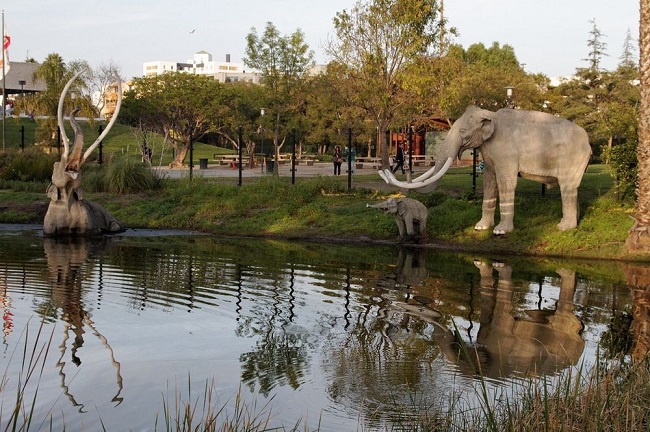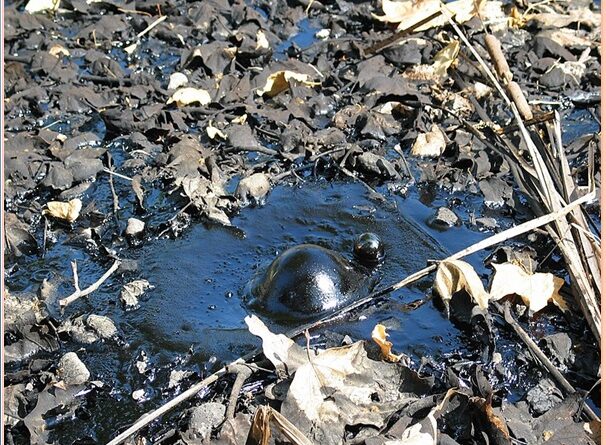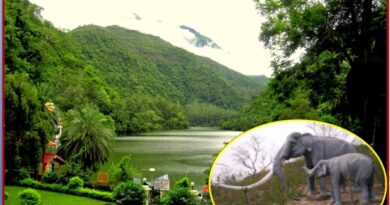The La Brea Tar Pits: World’s Oldest Preserved Ice Age Fossil
The La Brea Fossils Preserve
The La Brea Tar Pits are a series of tar pits located in Los Angeles, California. These pits are home to the world’s oldest, most extensive, and best-preserved ice age fossil site. The pits were discovered in 1912 by an oil worker named John D. Rockefeller. At the time, the tar pits were thought to be a natural source of oil. However, it was later discovered that the pits contained fossils from the Pleistocene epoch. The Pleistocene is the last period of the Ice Age and is defined by the presence of trapped animals like mammoths, mastodons, horses, camels, and bison. La Brea Tar Pits and Museum is an active paleontological research site in Los Angeles. It is situated in Hancock Park and formed around a group of tar pits (Asphaltum, bitumen, pitch, or tar) that has seeped up from the ground for tens of thousands of years.

Where is the La Brea Fossil Preserve located?
The La Brea Fossil Preserve or Tar pits are located on a low spot on the west side of Wilshire Boulevard, just south of La Brea Avenue. The pits are about long, wide, and deep, and The site has yielded an astonishing 1.6 million fossils, including 40,000 animal bones and 250,000 pieces of plant material that died during the last ice age. The tar has a high content of asphalt, which preserved the animals and their bones. The fossils represent over 100 different species of plants and animals, including the largest known carnivorous animal, the sabre-toothed cat. The site has been designated a National Historic Landmark and is one of the most popular tourist destinations in the Los Angeles area.
How Tar Pits form
Tar pits are composed of heavy oil fractions known as gilsonite, which seeps from the Earth as oil. Crude oil seeps up along the 6th Street Fault from the Salt Lake Oil Field, which underlies much of the Fairfax District north of Hancock Park. The oil reaches the surface and forms oil pools. Due to the lighter fractions, petroleum evaporate while asphalt normally hardens into stubby mounds. The pools and mounds can be seen in several areas of the park.

This seepage has been happening for tens of thousands of years, and asphalt sometimes formed a deposit thick enough to trap animals. The deposit would become covered over with water, dust, or leaves. Animals would wander in, become trapped, and die. Predators would enter to eat the trapped animals and would also become stuck. Like the bones of a dead animal sink, the asphalt soaks into them and turns into dark-brown or black in colour.
La Brea Fossil Preserve virtual tour
The La Brea Tar Pits Virtual Tour is a great way to learn more about the history of the world’s oldest, and best-preserved ice age fossil site. The tour provides a 360-degree view of the pits and allows visitors to explore the site from any angle. The tour also includes information about the excavation and preservation of the fossils, as well as a video presentation that takes you on a journey through the history of the ice age.
Also read- Triassic Beds of Lake Lugano and Ticino In Switzerland
The site has been preserved with the work of the Los Angeles County Museum of Art (LACMA) and the National Park Service (NPS). The NPS is currently working to restore and protect the site. They are doing this by removing tar from the site and storing it in a tar-free area. They are also working to prevent erosion and protect the fossils from damage.

How deep are the la Brea tar pits
The pits are approximately 12.2 acres in size and were excavated between 1912 and 1921. The tar in the pits comes from the animals that died and were buried there over a period of thousands of years. The tar was used to create oil in the early 20th century, but the site was later protected and is now a California State Historic Park. La Brea fossil Tar pit Museum preserves and displays fossils from the La Brea Tar Pits. The museum is open every day of the year except Christmas Day.
La Brea tar pits hours
The La Brea Tar Pits are a fascinating piece of history. The fossils that have been found here are providing scientists with valuable information about the ice age. La Brea fossils site is being preserved so that future generations can learn about this important time in history. Fossils La Brea tar pits are open from 9:00 am to 5:00 pm from Monday to Friday, and from 9:00 am to 4:00 pm on weekends. Admission is free.



